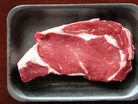The USDA sets a date for mechanically tenderized beef labeling requirements

Whether you’re a manufacturer of mechanically tenderized beef or a food processor using this type of meat in your products—or even if you’re in the business of retail and will be stocking such products in your grocery shelves and freezers—you probably know that the USDA has been working on new labeling laws to help consumers clearly identify products made with beef that’s been mechanically tenderized. Now those labels have been finalized, and a timeline has been set for the new labeling laws to go into effect. According to Food Safety News, labeling requirements for mechanically tenderized beef will officially take effect in May 2016.
Why is mechanically tenderized beef being singled out? Bacteria and foodborne pathogens are always an issue with meat, but traditionally these pathogens remain on the surface of the meat and can be easily cooked away. But the mechanical tenderization process, which uses blades or needles to puncture a cut of meat’s surface, can push those pathogens beneath the surface and make them much harder to kill—and therefore much more potentially dangerous to consumers.
To combat this issue, labels will alert consumers to meat that has been mechanically tenderized. Those labels will also include more specific cooking instructions, including minimum internal temperatures, to help ensure maximum safety. As Food Safety News reports, the USDA originally had plans to implement these labels in 2018. But the timeline was moved up, both to acknowledge advocates of a quicker turnaround, and because even the USDA confirms that this is an important issue in food safety:
Food safety advocates have in turn affirmed their approval of the new requirements:
With this accelerated timeline ready for action, the food production and retail industries can hopefully look forward to enhanced food safety and better consumer health in the very near future.
[SOURCE: Food Safety News]



